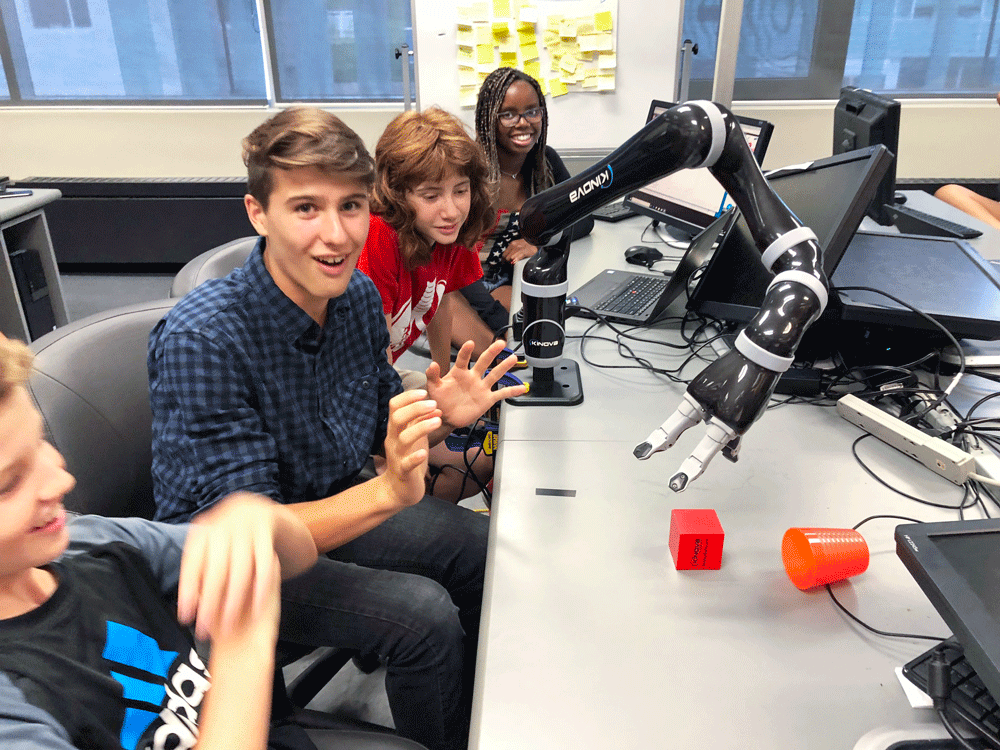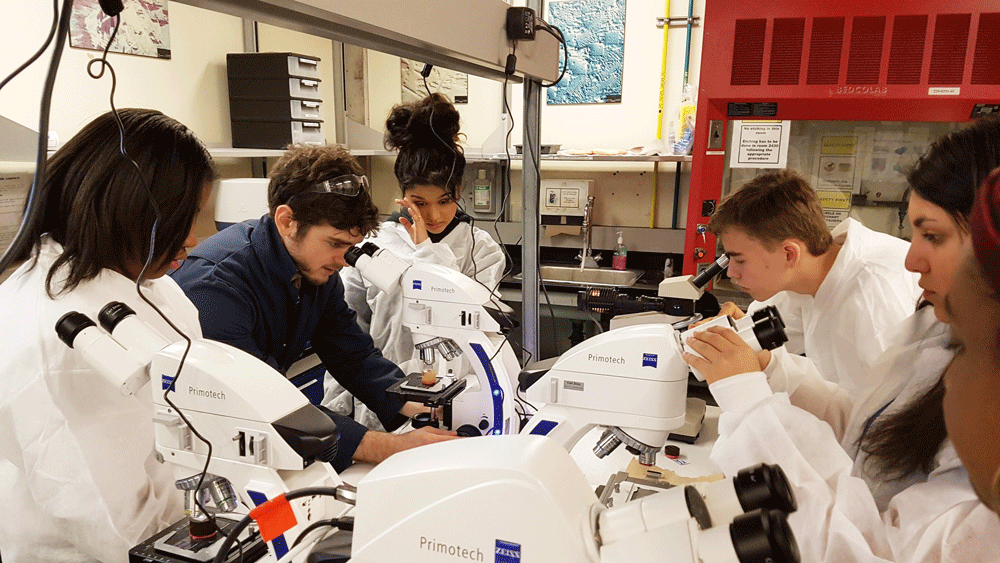
As society becomes increasingly integrated with technology, the need to educate students in Science, Technology, Engineering and Mathematics (STEM) becomes ever more paramount. However, Canada lags its global peers, as only 21 per cent of post-secondary graduates complete their studies with a degree in Science or Engineering. The average among the OECD (Organisation for Economic Co-operation and Development) and BRICS (Brazil, Russia, India, China and South Africa) nations is one point higher at 22 per cent, while South Korea leads the world with 32 per cent. Given the importance of STEM education, the question arises: how to encourage more people to choose this field of study?
While the University and the Faculty of Engineering grapple with this issue, at least two enterprising students have taken matters into their own hands.
Katherine Sirois (BEng ’20), a recipient of the Schulich Leadership Scholarship in 2017, is one example. Last summer, Sirois launched the Code ta mission (Code your mission) day camp discovery program for 12- to 15-year-old participants. The camp, which took place in the Faculty of Engineering’s Trottier Building, focused on high tech and culminated with a robotic obstacle course challenge.
Sirois explained the reasoning behind the camp’s creation: “As a student in the field, I realized that, if someone had little or no experience in programming or electronics, they were less likely to pursue studies in these areas. That is why I decided to give young teenagers a hands-on experience in electronics and programming as well as show them what is done in today’s tech companies.”
STEM in the real world
In addition to introducing the basics of robotic programming, the camp took students to visit companies like Dassault Systemes, Kinova, Desjardins Lab and Google, to see where an interest in STEM studies could take them one day. “The corporate partners were enthusiastic about opening their doors and welcoming such curious young minds over the summer,” said Sirois. “I hope this eventually becomes a real tradition across the province.” The program was also supported by General Motors, who contributed funds that helped less privileged children also take part in the course.
In all, three separate sessions were held, two in Montreal, and one in Quebec City. A total of 75 children participated. “Close to half of the students taking part were girls,” said Sirois. “This is important, because as a woman in the engineering field, I am personally committed to making our industry as diverse as possible.”
The young participants were enthusiastic about their experience. “This camp was a great adventure,” said Alexandra De Backer, aged 15. “I learned more in five days than I would have in years of school,” explained the student, noting that her normal school doesn’t offer any classes focused on technology.
Looking ahead, Sirois is already planning next year’s camp, which could offer new learning modules and more options for participants, as well as a possible increase in the number of participants and locations. Details on next year’s camp are available online.
The world of materials science
Another Engineering student interested in promoting STEM is Christina Maria Katsari (PhDEng ’20). A PhD student in the Department of Mining and Materials Engineering, and Vice President of the McGill Chapter of the Metallurgy and Materials Society (also known as MetSoc), she felt a personal desire to share her interest in the mysteries of materials.
“I wanted to create an activity where I could share my passion for materials engineering with a younger audience,” Katsari said when asked about her motivation for setting up a day camp called Materials under the Microscope, which ran in November of 2018.
The event was organized with the assistance of Let’s Talk Science a national charitable organization dedicated to getting youth engaged with science and technology subjects. Since 1991, the group has helped 1.3 million Canadian schoolchildren learn more about science through outreach activities arranged through chapter offices such as McGill University. Katsari also received crucial help from MetSoc and the Mining and Materials Engineering Department itself.
Under the microscope
Attending the session was a group of 23 students from Lakeside Academy in Lachine QC. Students were given a chance to look at materials under an electron microscope, as well as through a stereoscope and other devices that revealed the properties of a number of everyday items.
The high-schoolers were given a passport of questions to answer, and were each handed certificates to mark their completion of the mini study unit. For many, it was their first glimpse into the world of materials science. In fact, a post-event survey revealed that over 50 per cent of the participants would consider becoming Material engineers. Although there are no specific plans as of yet, it is hoped that another such event can be held.
Between the successful efforts of Katsari and Sirois, one has to be encouraged not only because young people are getting their first taste of ‘real-world’ science, but also because these young women have taken the initiative to launch these programs on their own. The future of STEM studies in Canada begins to look a little bit brighter thanks to their desire to share the wealth that knowledge brings.

